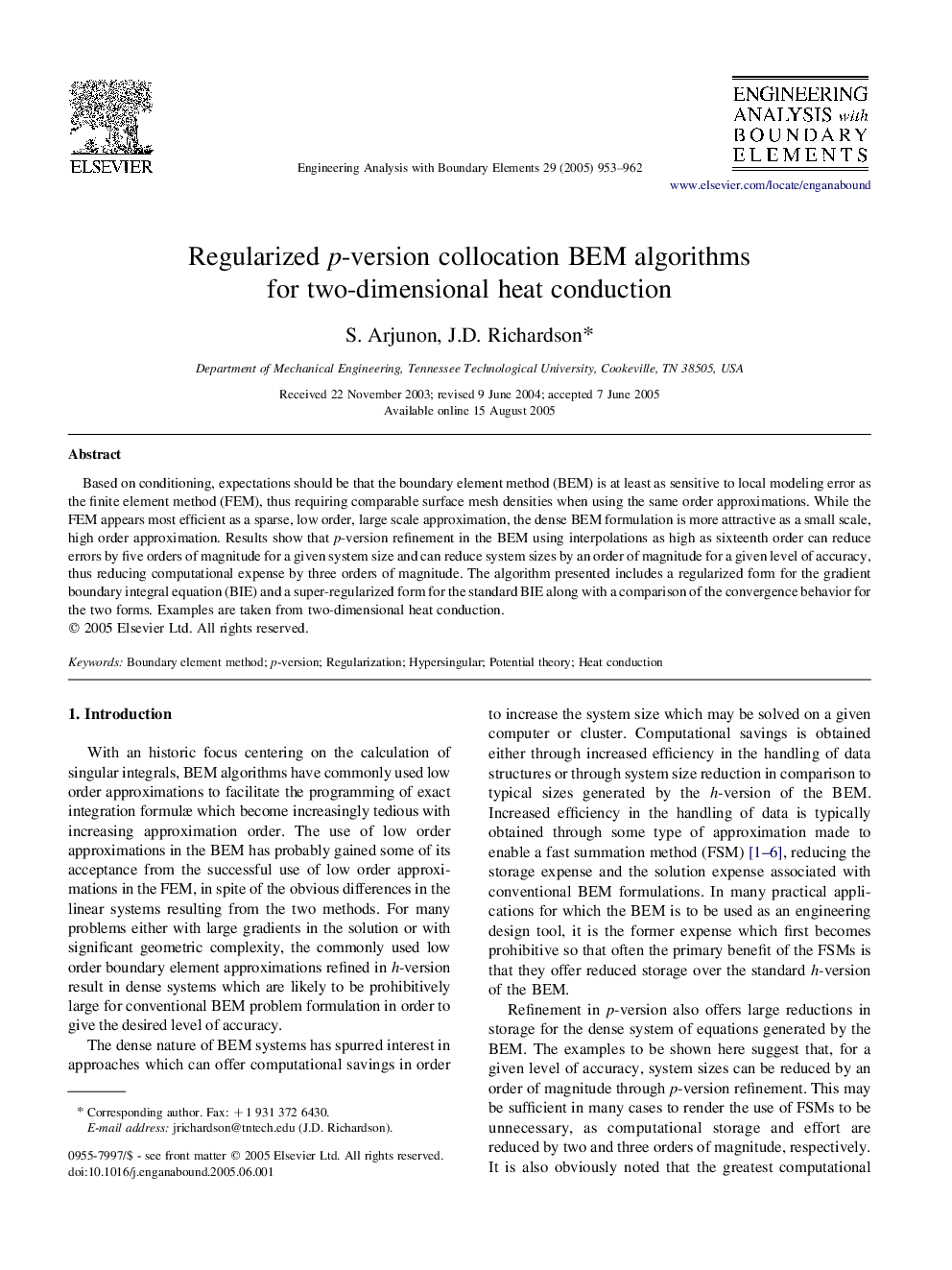| Article ID | Journal | Published Year | Pages | File Type |
|---|---|---|---|---|
| 10354064 | Engineering Analysis with Boundary Elements | 2005 | 10 Pages |
Abstract
Based on conditioning, expectations should be that the boundary element method (BEM) is at least as sensitive to local modeling error as the finite element method (FEM), thus requiring comparable surface mesh densities when using the same order approximations. While the FEM appears most efficient as a sparse, low order, large scale approximation, the dense BEM formulation is more attractive as a small scale, high order approximation. Results show that p-version refinement in the BEM using interpolations as high as sixteenth order can reduce errors by five orders of magnitude for a given system size and can reduce system sizes by an order of magnitude for a given level of accuracy, thus reducing computational expense by three orders of magnitude. The algorithm presented includes a regularized form for the gradient boundary integral equation (BIE) and a super-regularized form for the standard BIE along with a comparison of the convergence behavior for the two forms. Examples are taken from two-dimensional heat conduction.
Related Topics
Physical Sciences and Engineering
Computer Science
Computer Science Applications
Authors
S. Arjunon, J.D. Richardson,
